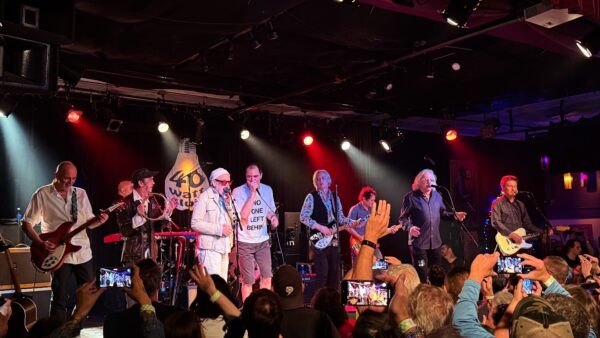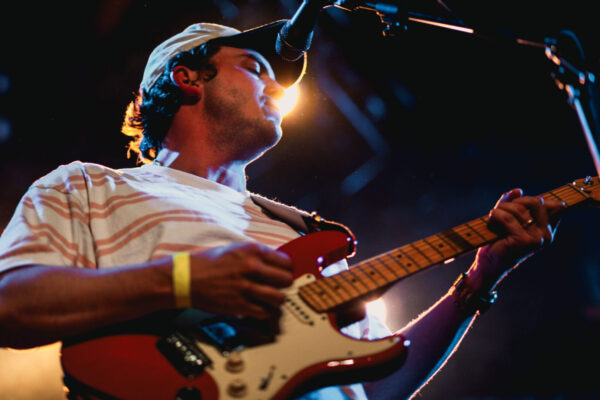
The Restoration Studio Journals — Part 1 — By Daniel Machado
[For more information on the photograph above, click here]
“The Lynching” is the song that will close The Restoration’s debut album and bring an end to my story of the Vale family. As a writer, it’s a song that has taken me on a grim and reflective journey deep into the heart of my home town’s racist past (and present — more details in part 2). As a band member, it’s a song that seems to carry a dark aura (fittingly so), spurring more friction and dispute than I’ve ever experienced recording an album. But I’m getting ahead of myself…
The adventure of recording The Restoration’s debut album officially began with intensive rehearsals in Lexington, SC’s muggy July heat. The rhythm instruments would be recorded first in Nashville, the lead instruments and vocals later in Lexington. As our Nashville deadline loomed nearer and nearer, Adam Corbett (bass/vocals), Eddie Lord (drums/bass) and myself (vocals/banjo/guitar) drilled familiar songs and struggled through new ones that were still being written. For me, those weeks of furious writing and rehearsing were bittersweet — clashing feelings of excitement and anxiety as I attempted to pen a strong beginning and ending to the fictional narrative that had become such a cherished part of my own life. “The Lynching”, which I finished writing last, was particularly difficult to learn and caused some of the first serious stress in the rehearsals, forcing us to wonder if we’d actually be able to pull off the live recording technique we were planning.
Our last rehearsal was attended by the album’s head engineer Collin Derrick and producer Stephen Russ. We shared notes and discussed our excitement and fears. Stephen grinned as he promised to get an amazing album out of us, whatever it took — warning that we would all hate him by the end of the process. Finally, with no time to spare, the pre-production work was done and I could be completely excited about the coming trip to “Music City”, where the actual recording would begin.
The road trip up was filled with excited talk, essential nostalgic music and Eddie’s always unexpected moving-vehicle window acrobatics. When we arrived at our beds the night before our first recording day, Adam and Eddie led Collin, Stephen and I in an impromptu jam session that began the digression of our collective sense of humor into that of a middle school boy — a mode we would retain for the duration of the trip.
Middle Tennessee State University’s recording studios were amazing: spacious, inspiring, full of character and creative energy. The control room featured a 20-foot ceiling, a gigantic sound board, beautiful wooden sound treatment and a layout like the bridge of the SS Enterprise. There was a dingy white recliner in the back of the room that Stephen immediately claimed and promised to lay in all week while crushing our spirits with endless commands of “this time do it without sucking”. We felt we could stay in there forever as we discussed the work to come and made loose plans for our visit to downtown Nashville during our down time. “Down time?” Stephen asked. “That will depend on how badly you play your instruments”. For the next few days, Adam, Eddie and I spent most of our time in three separate rooms, looking at each other through thick glass windows as we played our way through the long and detailed production list — Stephen always there to remind us that the Nashville studio musicians were waiting in the wings to replace us.
A few 16-hour days later — we had finished tracking drums, bass, guitar and banjo for 8 songs. We even had some spare time to record Collin performing a bit of Wurlitzer on “Constance”. We were amazingly on schedule and had managed to track almost everything live, “pre-1970s-style” (recording all the rhythm instruments simultaneously). In the end, despite all of Stephen’s threats of production tyranny, he actually turned out to be one of the most diplomatic, clearheaded and therapeutic creative directors I’ve encountered. He really pulled one over on us; keeping us at our musical best while always maintaining an atmosphere of humor and hilarity. Meanwhile, Collin seemed to have thought of every recording detail ahead of time; engineering, for example, the most elaborate arrangement of drum mics I’ve ever seen — capturing the “big-yet-vintage” drum sound we were hoping for, right out of the gate.
Despite occasional “Spinal Tap moments” of tension between all of us in the wee hours of the night, there were countless inspiring moments of studio energy. Eddie nailed the drums on “Little Round Shoes” at the end of an exhausting day and had us all smiling with his sweeping bass solo in “Henry’s Letter”. Adam’s new bass lines in “The Lynching” were sick and his new song “Rev. Harper” sounded completely badass. As the band grinned at each other through the glass, we all felt very lucky.
After a trip to downtown Nashville, Jack White’s record shop (it was closed) the Grand Ole Opry (it was too expensive to go inside) and a big group hug, I was suddenly back home, exhausted and missing the recording studio and the guys. I had a great break, enjoyed time with loved ones, played some Wii, and before I knew it we were all back together — this time set up in my old practice room in Lexington. The next week would consist of recording violin, piano and some lead vocals — and would also put “The Lynching” under the production microscope as we all worked to rein in the monster song both lyrically and sonically. As I revised dense lyrical narrative, researched Lexington’s dark, non-fictional history of racial violence and tied up my fictional story’s loose ends, my courage as a writer would be put to the test — and that, friends, is where my adventure picks up next time.




